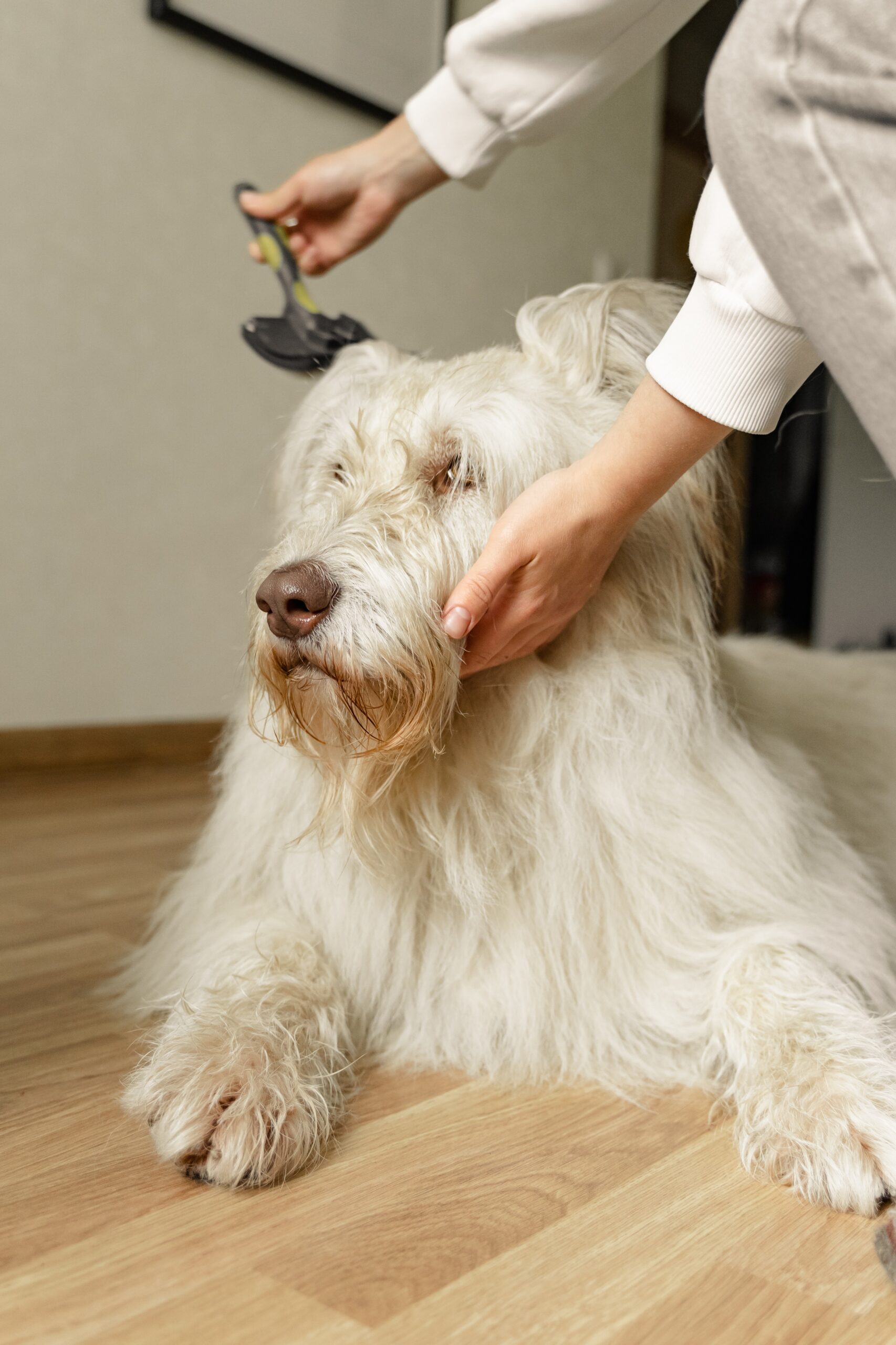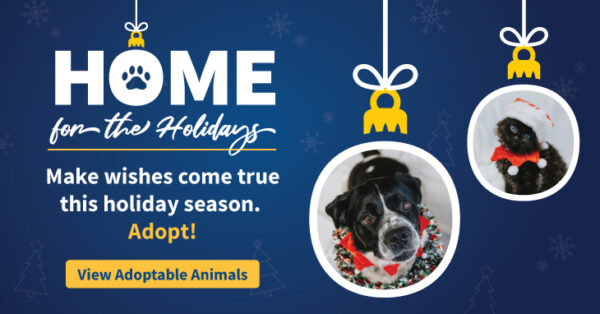Winter grooming tips for your dog
by Ontario SPCA and Humane Society | Dog Care | January 27, 2025

How does winter impact your dog’s grooming routine? In Canada’s harsh winters, exposure to cold air and snow can cause dry, itchy skin, cracked paws or discomfort during walks. In this blog, we share key tips to care for your dog’s coat, paws and skin, during the winter months.
Winter grooming
Grooming is an important part of keeping your dog’s coat, skin, and paws healthy during the winter. You’ll need to give special care to grooming their paws. If your dog has long hair, trim the hair between the paw pads and around the paws. This serves several functions: it minimizes painful ice balls from forming on your dog’s paws; it reduces the amount of road salt and de-icing chemicals that are picked up; and it makes it easier for you to clean and apply moisturizing balm to your dog’s paws after your walks.
Don’t forget to keep your dog’s nails trimmed all year round, including the winter. Long nails tend to splay your dog’s paws while walking, making it easier for irritants to get between paw pads.
As for your dog’s skin, brushing their coat on a regular basis will help get rid of dead hair, distribute natural oils throughout the coat, and help invigorate the skin.
Keep paws clean
Thoroughly wash and dry your dog’s paws after taking them for a walk, making sure to also clean the area between their toes. This gets off any de-icing chemicals that may be on your dog’s paws. Use this opportunity to inspect your dog’s paws for any cracks or redness. If you have any concerns about your dog’s paws, reach out to your veterinarian for guidance. Watch our step by step video for tips on keeping your dog’s paws clean.
Paw protectors
Dog boots can help minimize contact between your dog’s feet and harmful chemicals. Another option is to use paw balm to create a protective layer on your dog’s paw pads. You should still wash your dog’s paws after walks to make sure your pooch doesn’t accidentally lick any chemicals left on their paws. Watch our video for tips on introducing your dog to winter boots.
We all know how rough winter can be, so we hope these tips help minimize the impact the cold weather and icy conditions will have on your dog!
If this information was helpful, please help us continue to educate about pet health and well-being by making a donation. As a registered charity that does not receive annual government funding, the Ontario SPCA depends on the generosity of donors to change the lives of animals in need.
Categories
Testimonial
Thank you for looking after these animals
Thank you for looking after these animals — I would love to have them all in my house!
